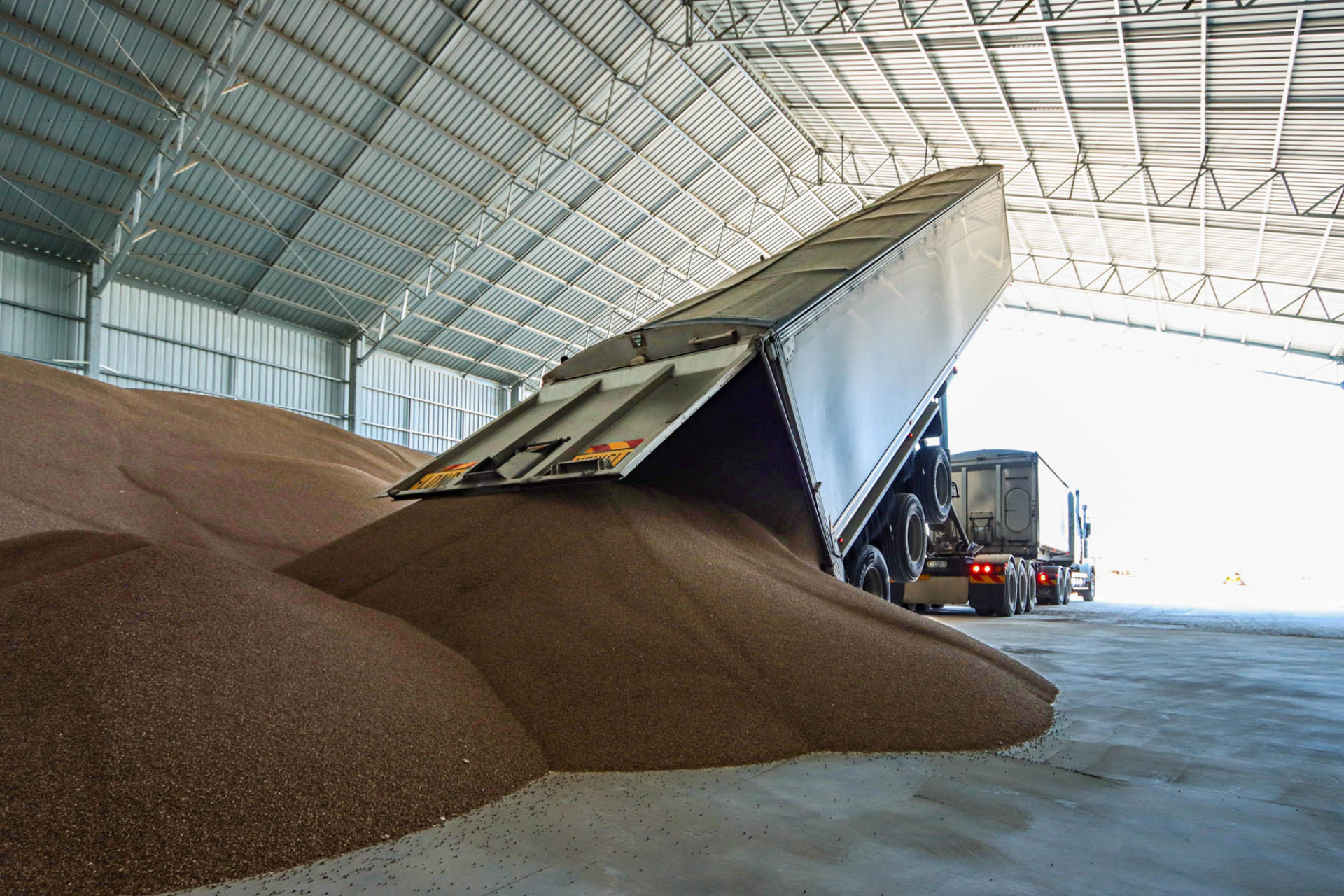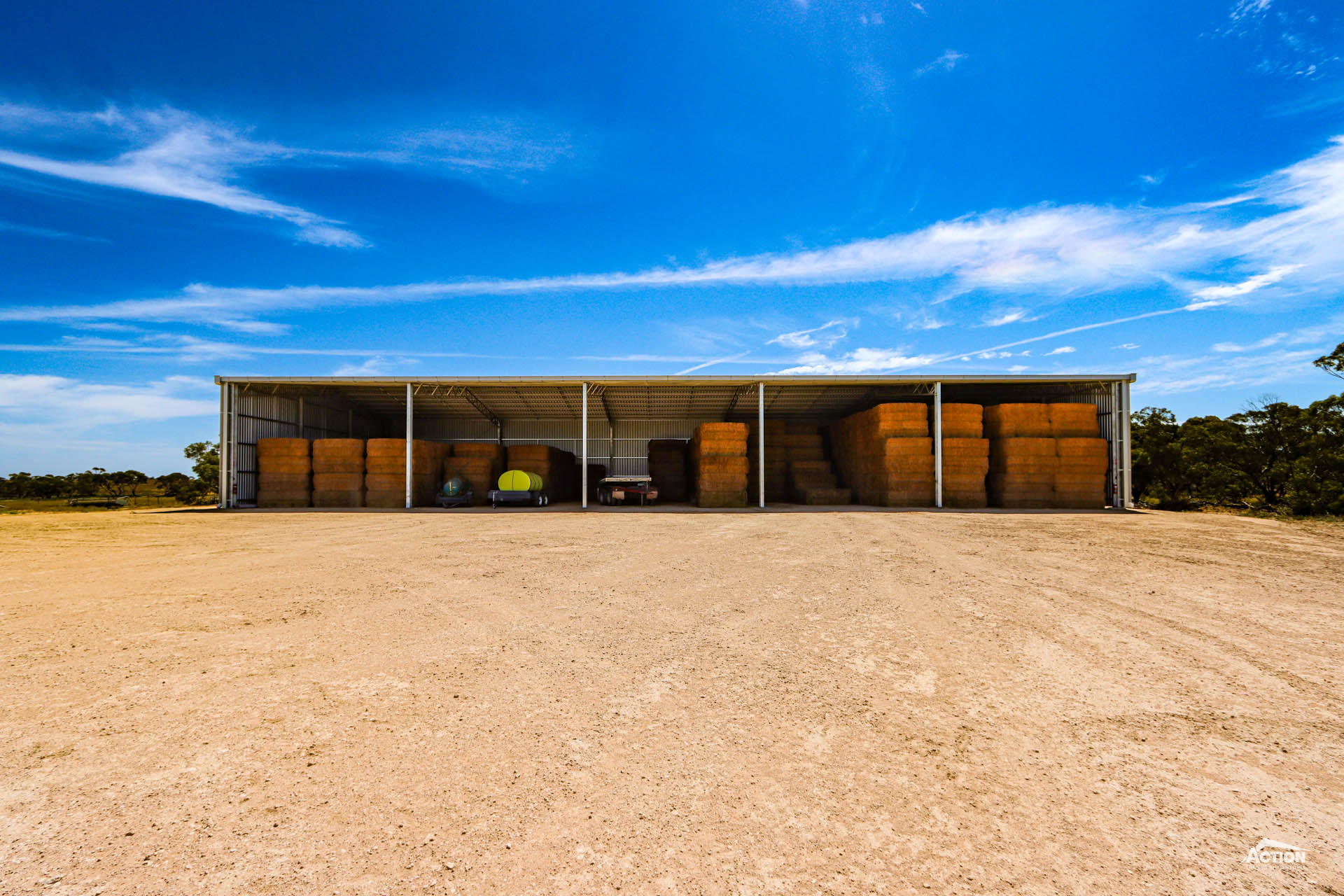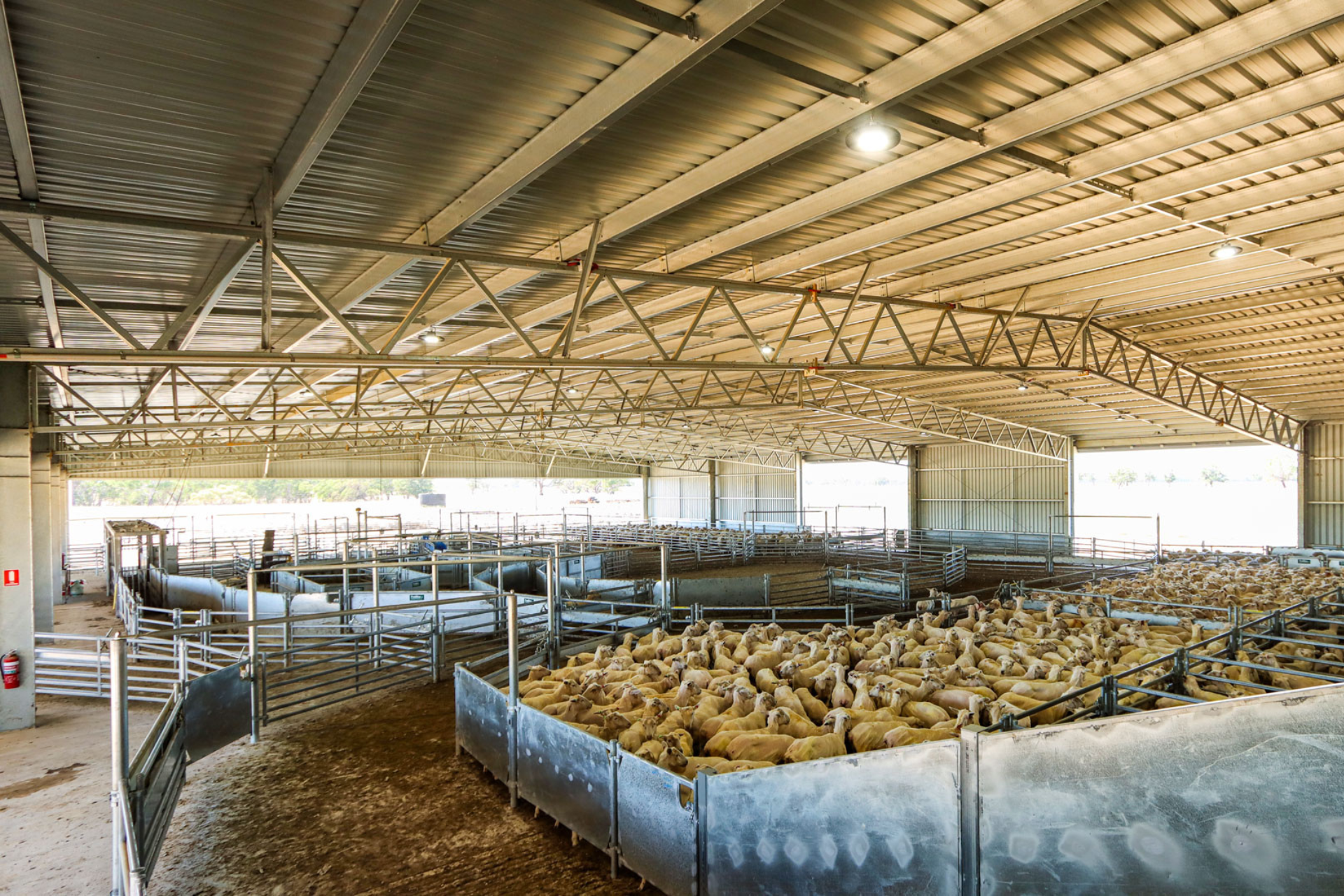As on-farm fertiliser sheds become more popular, questions about fertiliser shed sizes become more common.
What size fertiliser shed do I need?
How high does the shed need to be to allow tipping inside?
Are there recommended fertiliser shed sizes?
In this article, we discuss all the different aspects of fertiliser shed sizes including bulk density, clearance heights, shed length, roof pitch and more.
What Size Fertiliser Shed Do I Need?
The best fertiliser shed size for your operation will be determined by a number of factors, including:
- What type of fertiliser are you storing? How much fertiliser do you want to store?
The bulk density of the fertiliser will influence how much you can store in your shed.
- Are you storing multiple products in the shed?
Storing multiple products in your shed requires segregation which will influence the overall capacity of your shed.
- How will you be loading and unloading the shed?
This will dictate details such as wall height, roof pitch, shed length and shed configuration.
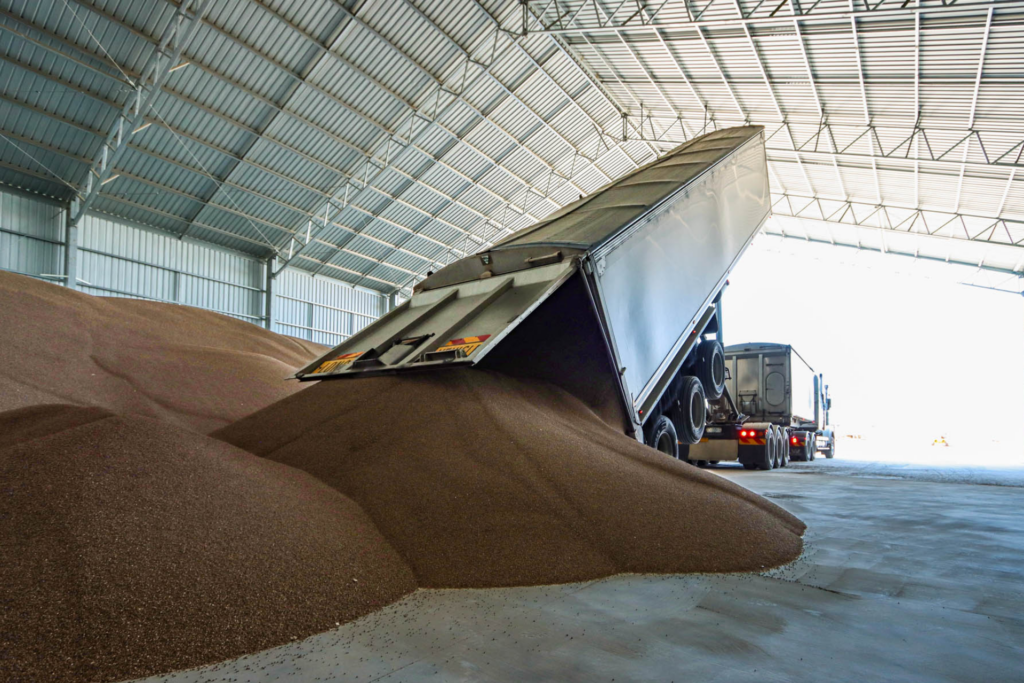
- Is it a multi-purpose shed? Will you be storing machinery in the shed?
Opting for a multi-purpose shed will mean you need to address details like machinery access, segregation and configuration.
- What are your future plans for the shed?
If you plan to expand your cropping operation in the future, it is a good idea to allow for increased fertiliser storage requirements. Or, if you plan to repurpose the shed for either grain storage or machinery storage then factor details like machinery access requirements into the size and design.
- Is there existing infrastructure you need to work in with?
Sometimes the site selected for your shed will dictate the size and configuration of your shed. For example, you may need to work in with existing sheds and buildings.
- Will there be any council requirements or fire design requirements that impact the size of the shed?
There may be boundaries and setbacks you need to consider when selecting your site. Our building consultants can help you through this process – it may mean you have to get additional permits.
It is a good idea to consider these points when planning your project to ensure each one is addressed, this helps avoid a dysfunctional design or additional costs in the future. Our building consultants are available to visit site and provide a thorough consultation.
With these points in mind, next up we discuss details such as fertiliser shed height and length. We also discuss the importance of understanding bulk density, and provide some useful resources including the fertiliser storage calculator and standard fertiliser shed price guide.
Fertiliser Shed Capacity
Capacity is often the first consideration when it comes to fertiliser shed sizes.
How many tonnes will this size store? What size shed do I need to store 500 tonnes of urea?
There are several things that will impact the capacity of a shed: shed size, fertiliser type, the amount of fertiliser and the number of products.
One of the most important things to consider when it comes to shed capacity is the bulk density of the product or products you are storing.
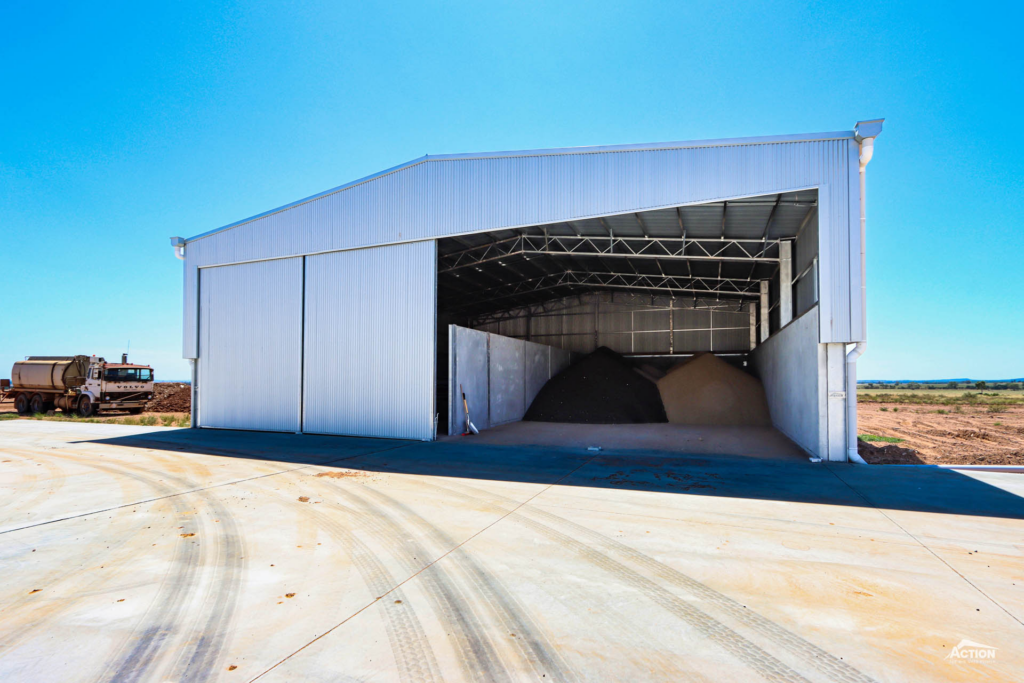
Understanding Bulk Density
Bulk density is the total mass of the product divided by the total volume of the space it occupies.
This means it takes into account the air space between the particles so, generally, the finer the fertiliser, the lower the bulk density.
This is an important consideration, particularly when storing multiple products in your shed. For example, the bulk density of Urea (at 750kg/M3) is approximately the same as storing 1/3 MAP (1000kg/M3) and 2/3 Urea combined.
Segregating multiple products in your shed also reduces the overall capacity of your shed. This is why we recommend using removable t-walls to achieve your segregation requirement. This gives the flexibility of being able to store one bulk product or segregating multiple products as needed.
If you are in the initial planning stages of your fertiliser shed, our fertiliser storage calculator can be a handy tool.
Fertiliser Calculator
To help you determine the best shed size for storing fert, use this calculator.
Put in your shed size and fert type in the left side fields and the storage volume and total tonnage will be displayed on the right.
Standard Fertiliser Shed Range (Sizes & Prices)
Our standard fertiliser shed range includes options for:
- 1500 tonne storage
- 1000 tonne storage
- 500 tonne storage
Download the brochure here to access these sizes, designs and price guides.
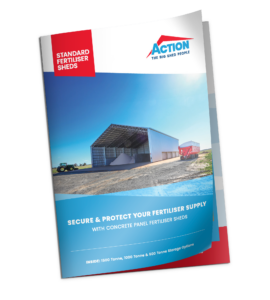
Capacity is just one aspect of a fertiliser shed size, details like height, length and width are what can make the difference between functional and effective fertiliser storage and dysfunctional and frustrating fertiliser storage.
Here’s what you need to know about these details – and how to get them right.
Fertiliser Shed Height
The way you will load your shed will usually dictate the height your fertiliser shed needs to be.
Two of the most popular fertiliser shed heights are 6.75 metres and 8.25 metres.
The 8.25 metre options is typically used in conjunction with a steep roof pitch to accommodate tipping inside the shed.
When it comes to concrete panel wall height, the standard size is 3 metres high. This is well suited to the angle of repose of most fertilisers and grains. (The angle of repose is “the steepest angle at which a sloping surface formed of loose material is stable.”)
Fertiliser Shed Length
The recommended lengths included in our standard fertiliser shed range are 18 metres, 24 metres, 30 metres, 32 metres and 34 metres depending on the shed configuration and storage capacity.
For example, on open gable end fertiliser sheds we include an extra bay length to provide additional weather protection.
The advantage of these lengths is that they are ideal for loading into, any longer and you would be unable to take advantage of the length.
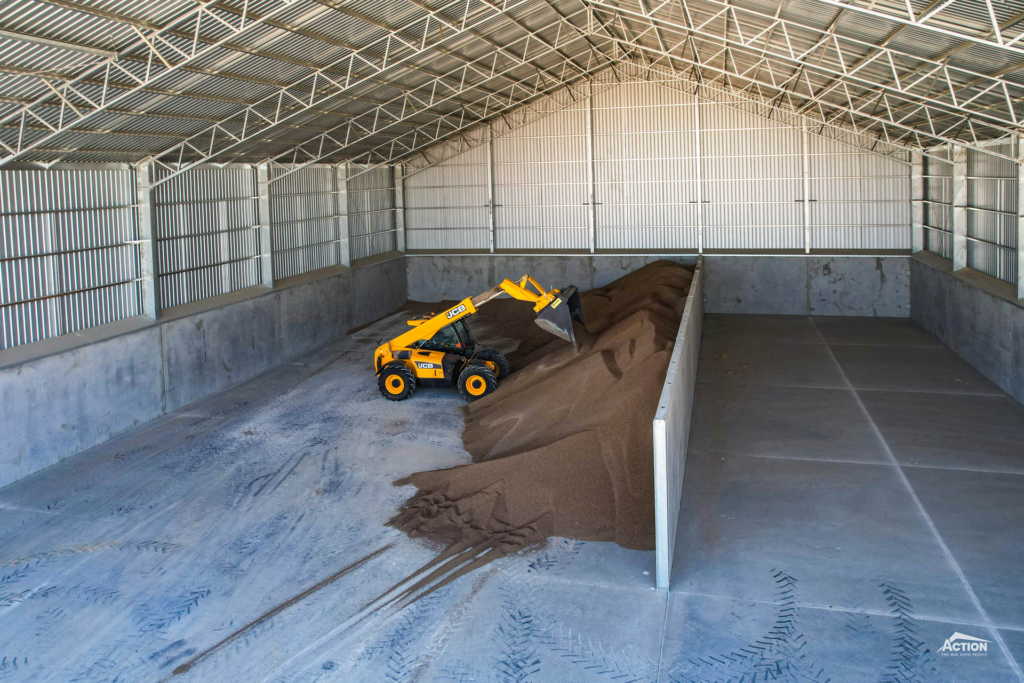
Fertiliser Shed Width
There are a number of spans in our standard span range that are a good fit for fertiliser sheds. This helps makes the design both cost-effective and practical.
Standard size spans commonly used for fertiliser sheds include 15 metres, 18 metres and 24 metres.
The best width for your shed will depend on whether you are storing multiple, segregated products, and whether you will require wide machinery access now or in the future.
Fertiliser Shed Roof Pitch
As mentioned earlier, choosing a steep roof pitch allows tipping into your fertiliser shed and accommodates the angle of repose (particularly important if you plan to store grain in the shed at some point).
While a standard farm shed roof pitch is 7.5 degrees, roof pitch options for fertiliser sheds range from 18 degrees to 21 degrees. 21 degrees is also a common choice for grain sheds.
Fertiliser Shed Configuration
There are a number of fertiliser shed configurations available and the configuration you choose will also influence the shed size you require.
Configurations options include:
- A three-sided shed with an open gable end.
Options for this configuration include an extra bay at the front for additional weather protection or sliding doors can be installed to keep it secure.
- A fully-enclosed shed with sliding doors at each end and concrete panels in the middle of the shed for segregation.
This is popular option for large multi-purpose bulk storage sheds, as it allows the shed to be loaded from both gable ends.
A fully-enclosed shed with sliding doors along the shed and segregated bays for storing multiple products.
This configuration could be adapted to include two or three segregated bays and one gable end used for a bulk storage area.
You can learn more about each of these options here – Three Of The Best Fertiliser Shed Designs
That’s a wrap on the important points you need to keep in mind when it comes to fertiliser shed sizes!
Below we have provided additional resources and information – including an inspiration gallery to kick-start your project!
Fertiliser Shed Project Gallery
Useful Resources
- How Much Do Concrete Panels For Farm Sheds Cost?
- UB Rafter Versus Open Web Truss
- What Is Hot Dip Galvanizing (Video)
For more information and resources, check out our Learning Hub.
Or to receive fertiliser shed sizes and prices for your project, simply submit a REQUEST A QUOTE form and we will be in touch!

